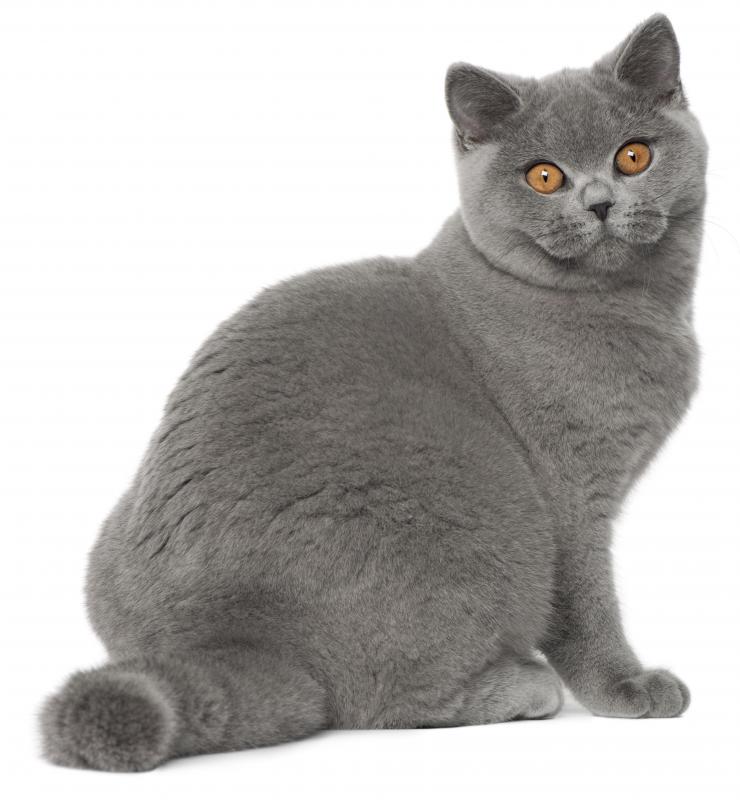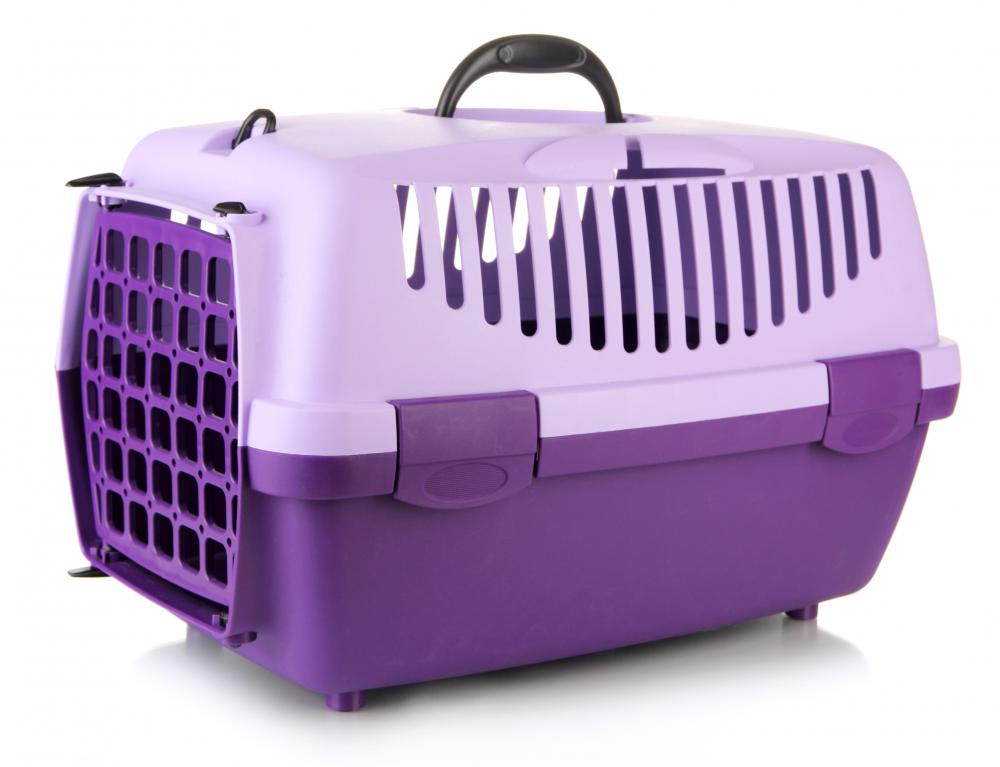At AllThingsNature, we're committed to delivering accurate, trustworthy information. Our expert-authored content is rigorously fact-checked and sourced from credible authorities. Discover how we uphold the highest standards in providing you with reliable knowledge.
What Should I Consider When Buying a Cat Carrier?
A cat carrier is a very useful thing for transporting cats and other small animals in a secure space. Allowing animals to be loose while being moved can result in greater stress for both animals and people, and may allow the animal to escape as well. There are several things to consider when buying a cat carrier including the type of animal and how the cat carrier will be used. Thinking about your needs ahead of time will allow you to purchase a cat carrier suited to them, and will prevent you from having to purchase another one at a later date.
The first thing to think about when purchasing a cat carrier is what kind of animal is being transported. Cat carriers work well for cats, of course, but they are also used for other small mammals like rabbits, or avians like ducks and chickens. Obviously, if the carrier is being purchased for a very small mammal like a squirrel or a hedgehog, the carrier does not need to be as large. Bigger cats and some large birds such as geese will need larger carriers to accommodate their size.

Weigh the animal being transported so that you know what kind of load the cat carrier needs to be able to bear. Some cat carriers are cheaply constructed and may fail at a crucial moment. If the cat carrier does not have a weight limit listed, approximate the weight of the animal in the store with bags of food or litter to see if the cat carrier will hold up. Check for other signs of sturdy construction as well: look at how the door of the carrier is closed, and if it locks. Wiggle the carrier to see if it gives or seems easy to break out of, as well.

It is also important to think about how the cat carrier will be used. If you intend to take it on aircraft, contact the airline to find out their size restrictions. Measurements for taking carriers on the cabin are usually very precise, and you want to avoid flying your animal with the cargo. Airlines may have additional restrictions on cat carrier designs that you should take into consideration as well. Most airlines, for example, required hard carriers rather than soft bags.

If the cat carrier is just being used in the car and for short trips, a soft carrier might be more comfortable. Soft carriers usually resemble netted bags, and are designed to allow the animal to breathe in comfort and see the outside world. Most have a compartment below where you can store accessories like toys or a leash, and sturdy shoulder straps along with handles. If the cat carrier is being used for longer trips, you want the animal to have more room, or you are concerned that the animal will claw or chew its way out, a sturdy hard cat carrier may be a better choice.
Frequently Asked Questions
What size carrier is appropriate for my cat?
When selecting a cat carrier, ensure it's large enough for your cat to stand, turn around, and lie down comfortably. According to the International Air Transport Association (IATA), the carrier should be about 1.5 times the size of your cat. This guideline helps prevent stress and discomfort during travel.
Are hard or soft carriers better for cats?
The choice between hard and soft carriers depends on your needs. Hard carriers offer durability and are easy to clean, making them suitable for frequent use and vet visits. Soft carriers are lighter and often more comfortable for the cat, ideal for calm, short trips or cats that are not prone to scratching or biting.
What features should I look for in a cat carrier for air travel?
For air travel, the carrier must meet airline specifications, which typically include size restrictions and the requirement for it to be leak-proof and ventilated on all sides. It's advisable to look for carriers with secure zippers, comfortable padding, and handles or straps for easy carrying. Always check with the specific airline for their requirements before purchasing.
How can I ensure my cat's comfort and safety in a carrier?
To ensure comfort and safety, choose a well-ventilated carrier with a stable, non-slip floor. Add a familiar blanket or toy to provide comfort. For safety, ensure the carrier has a secure latch or zipper and that it's free from any interior protrusions that could harm your cat. Regularly inspect the carrier for signs of wear or damage.
Is it important to have a top-loading cat carrier?
A top-loading cat carrier can be very beneficial, especially for cats that are reluctant to enter a carrier. It allows for easier placement and removal of your cat, reducing stress for both the pet and owner. This feature is particularly helpful during vet visits or when dealing with cats that are not used to being in a carrier.
How do I acclimate my cat to a new carrier?
To acclimate your cat to a new carrier, introduce it gradually. Place the carrier in a common area with the door open, allowing your cat to explore it at their own pace. Encourage exploration by placing treats or favorite toys inside. Practice short trips to build positive associations, ensuring the carrier is a safe and comfortable space for your cat.
AS FEATURED ON:
AS FEATURED ON:













Discussion Comments
I believe the safest cat/small animal carrier are the vari kennels or the kennel cabs. I also seat belt them in. The seat belt can go across the top through the handle and then locked in. In case of an accident there is better chance of survival than the soft carriers. They also have room to sleep curled up and room for food and water especially during long car rides. Most cats will not use a litter box in a car. I have never seen one. So just in case, I line the bottom of the carrier with disposable diapers. This way should the cat/ even a small animal urinate even out of fear of being in the car, they will not sit in their own urine.
I hate when I see people driving with their cat sitting in the back window. It is very dangerous. Not only could the cat find its way under the foot pedals and cause an accident also should something happen the cat may run out never to be seen again. I always use a kennel cab or a vari kennel. I think it's the best option.
Post your comments